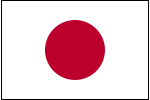|  Japan Japan | | |
| Voter turnout in the national election | 56.0% (2021)
[135/200countries] | | |
| % of those who think that voting in elections is very important to be a good citizen | 71.2% (2022)
[15/19countries] | | |
| Extent to which people think that it is important, in order to be a good citizen, to vote in elections | 5.69 (2014)
[19/34countries] | | |
| % of those who think that voting gives people some say about how the government runs things | 47.1% (2019)
[34/34countries] | | |
| % of those who think that it is important that honest elections are held regularly | 88.8% (2019)
[25/34countries] | | |
| % of those who think that the last national election was fair regarding the opportunities of the candidates and parties to campaign | 46.3% (2014)
[24/34countries] | | |
| % of those who think that referendums are a good way to decide important political questions | 61.2% (2014)
[24/34countries] | | |
| % of those who think that it is important that people can say what they want without state/ government censorship | 94.0% (2019)
[16/34countries] | | |
| % of those who think that giving people more say is the most important aim of the country out of maintaining national order/ giving people more say/ fighting rising prices/ protecting freedom of speech | 42.7% (2020)
[2/28countries] | | |
| % of those who think that protecting freedom of speech is the most important aim of the country out of maintaining national order/ giving people more say/ fighting rising prices/ protecting freedom of speech | 7.0% (2020)
[21/28countries] | | |
| % of those who are satisfied with the way democracy is working | 36.7% (2023)
[17/23countries] | | |
| % of those who are proud of their country in the way democracy works | 71.5% (2013)
[9/33countries] | | |
| Extent to which people think democracy works well in their country today | 5.24 (2014)
[22/34countries] | | |
| Extent to which people think democracy worked well in their country 10 years ago | 5.33 (2014)
[22/34countries] | | |
| Extent to which people think democracy will work well in their country 10 years from now | 4.82 (2014)
[29/34countries] | | |
| % of those who are optimistic about the future of their country's political system | 35.2% (2019)
[20/34countries] | | |
| % of those who think that their country's political system needs major reform | 66.4% (2021)
[8/17countries] | | |
| % of those who think that the state is run for the benefit of all the people | 43.2% (2019)
[25/34countries] | | |
| Extent to which people think it important that all citizens have an adequate standard of living | 5.97 (2014)
[31/34countries] | | |
| Extent to which people think it important that government authorities respect and protect the rights of minorities | 4.59 (2014)
[34/34countries] | | |
| Extent to which people think it important that people be given more opportunities to participate in public decision-making | 5.34 (2014)
[32/34countries] | | |
| Extent to which people think it important that citizens may engage in acts of civil disobedience when they oppose government actions | 4.43 (2014)
[23/34countries] | | |
| Extent to which people think it important that governments respect democratic rights whatever the circumstances | 5.66 (2014)
[31/34countries] | | |
| Extent to which people think it important that people convicted of serious crimes lose their citizen rights | 4.94 (2014)
[18/34countries] | | |
| Extent to which people think it important that long-term residents of a country, who are not citizens, have the right to vote in that countryfs national elections | 4.59 (2014)
[10/34countries] | | |
| Extent to which people think it important that citizens have the right not to vote | 3.61 (2014)
[33/34countries] | | |
| Extent to which people think it important that health care be provided for everyone | 6.43 (2014)
[25/34countries] | | |
| % of those who think that it is important that human rights organizations are allowed to operate without interference | 89.2% (2019)
[16/34countries] | | |
| % of those who think that a democratic system where citizens, not elected officials, vote directly on major national issues to decide what becomes law is good | 65.5% (2023)
[17/23countries] | | |
| % of those who think that a democratic system where representatives elected by citizens decide what becomes law is good | 78.1% (2023)
[18/23countries] | | |
| % of those who think that a system where a strong leader can make decisions without interference from parliament or the courts | 35.1% (2023)
[9/23countries] | | |
| % of those who think that a system where experts, not elected officials, make decisions | 59.3% (2023)
[12/23countries] | | |
| % of those who think that a system where the military rules the country | 15.6% (2023)
[9/23countries] | | |







